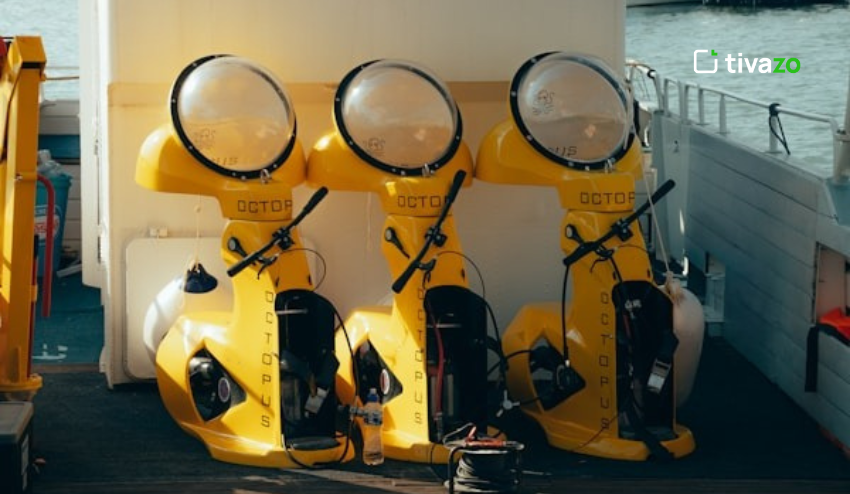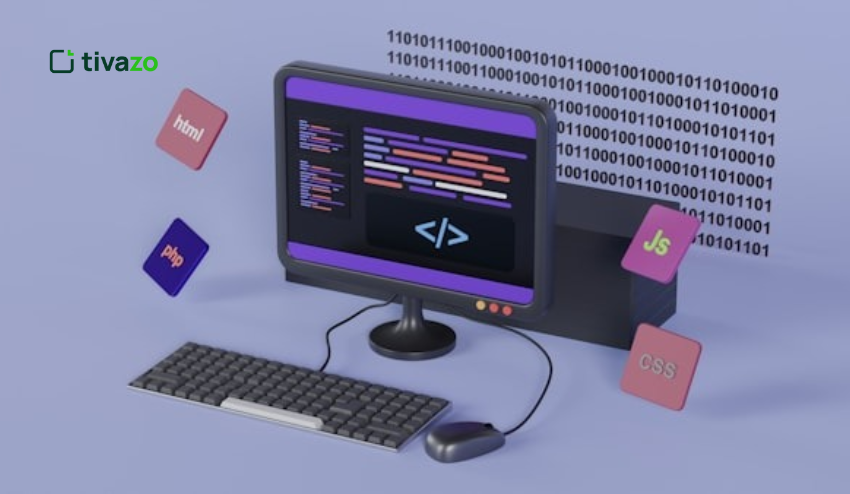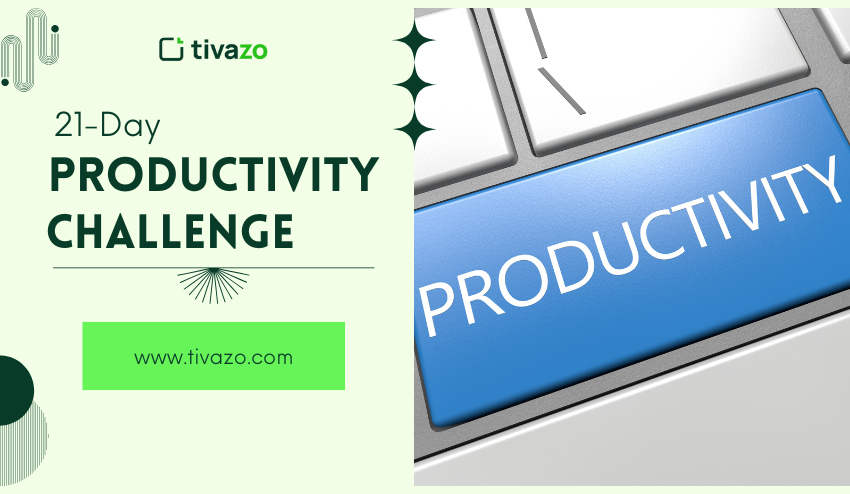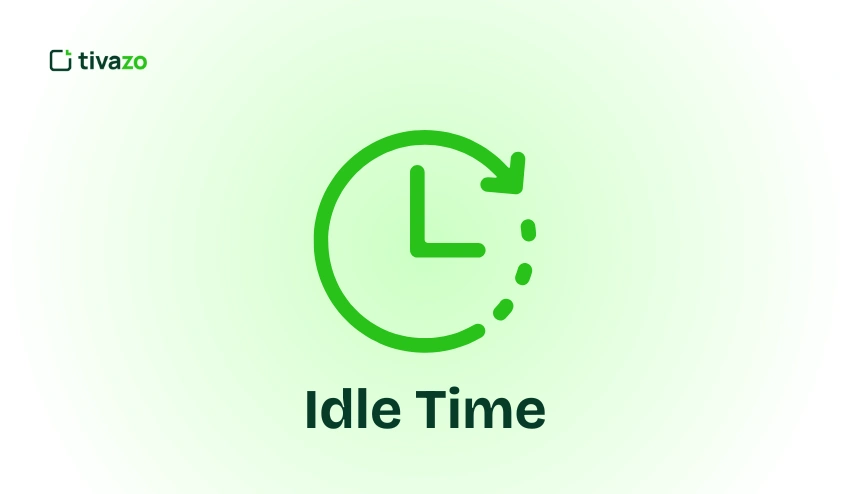The 21-Day Productivity Challenge, Define a 21-day sprint with distinct milestones and products to convert the overload of the first week into momentum.
Remote work and hybrid work are still mainstream. In 2023, among the U.S. remote-capable employees, 35% worked fully remote and 41% worked as hybrids, and connection to co-workers was one of the issues. In January 2025, three-quarters of employees who could work remotely but were not entirely favored with a set of in-office days said that their employer insisted on it, meaning onboarding has to be effective across time zones, places, and devices without forming two types of experience.
Why 21 Days: Momentum Over Myth
The average time of forming a habit is 66 days, and therefore, instead of finishing the process of habit formation, the 21-day productivity challenge is used to gain momentum.
What the Science Says About Habits
The results of a UCL study were an average of approximately 66 days to automaticity, with high individual and behavioral dispersion. One should not promise a full ramp in three weeks; one should aim at momentum, confidence and first value. Consider the sprint as Phase 1 which lays the framework of behaviors and systems which you will perfect over the two to six months.
How the Sprint Fits the Bigger Arc
The initial 21 days should be used to create clarity, connection and compliance. Maintain improvement in buddying, coaching and stretch goals in 3-6 months. Link sprint deliverables to a 30-60-90 schedule and renegotiate on Day 45 and Day 90 to stay on course.
KPI Cookbook: Definitions, Targets, and How to Measure
State success in terms that are friendly to leaders: Time-to-first-value, Time-to-productivity, early retention, timesheet compliance, onboarding eNPS and Manager satisfaction.
Core Metric Definitions
Time-to-first-value (TtFV) is the time that has passed until the new hire completes a valuable deliverable, like first ticket closed, first PR merged or first email to a customer resolved. Time-to-Productivity (ttp) monitors the number of days until the new employee maintains an agreed level of output per week in the position.
First-45-day retention This is the percentage of new employees who remain with the company within the first 45 days, a crucial period since up to 20 percent of the churn happens during the first 45 days; timesheet compliance is the percentage of anticipated time entries submitted correctly by the weekly deadline; onboarding eNPS is the likelihood of the new employee recommending the company as a place to work after Week 1 and after Week 3 check-ins based on manager rating on a 1-to-5 scale; manager satisfaction is the probability of the new employee being able to.
Targets to Pursue
Goal of TtFV of five days or less on most of the knowledge jobs, and Day 3 to 7 on engineering based on the complexity in the stack. Establ TtP 30-45 days based on scope of role. 95 percent or higher first-45-day retention, 98 percent or higher timesheet compliance, +50 or higher onboarding eNPS.
How to Instrument These Metrics
Calculate TtFV and TtP by using activity and task timestamps. Day 7 and Day 21 Pulse eNPS using one-question survey and optional comments. The level of record manager satisfaction on Day 7 and Day 15 one-on-one meetings, as well as Day 21 review, recorded in the human resources information system (HRIS) or in your onboarding tracker.
Measurement Stack With Tivazo: Visibility Without Eroding Trust
Measure Tivazo to instrument work and clock transparently to allow managers to coach and payroll remain correct without compromising privacy.

Set Up Tivazo in 30 Minutes
Prepare a working place and invite the new employee, his/her manager, and buddy. Installing Tivazoagent on Windows, macOS or Linux, version parity, project and cost center configuration to map payroll, idle and break detection and time-zone working hours. Optional screenshots should be turned on only with express permission, and those should be recording at low frequency (e.g. every 10 minutes) and be masked; the base is a free plan that has up to 10 users and a business tier of 3 per user per month.
Privacy-by-Design Choices
Post a brief policy indicating what is (activity, app and URL focus, optional screenshots) and what is not (keystroke, personal device information), why and how long. Mask sensitive information such as HRIS, payroll and personally identifiable information (PII) on screen shots by using masking keywords and illustrate masking using sample images. Payroll and compensation – have set screenshot retention to 14-30 days and restrict access to managers and human resources to coaching and payroll controversy; position monitoring as coaching and data preciseness but not spying.
Weekly Reporting and Payroll Accuracy
Get a weekly export to compare the logged time with timesheets and work out differences during a 10 minutes Friday regular review. Learning the tags separately and then the delivery hours to ensure that the time of development is not affected but the investment is reflected. Provide a concise evidence demonstration with highlights to cement progress and establish confidence.
Build the Physical Onboarding Kit: Essentials and Sourcing
Deliver a Day 1 practical kit that enhances cognition, audio quality and belonging.

Essentials With Reasons
Have a notebook and pen of superior quality to make analog notes, decision logs, and quick drawings in cases where screenshare is not possible. Included USB-C expansion, international power adapters, headset with noise-canning microphone to use on calls, a hardware security key that supports two-factor authentication (2FA) and a one-page multi-factor authentication (MFA) quick-start guide, and an ergonomic laptop stand with external keyboard and mouse.
Top this off with a water bottle and a hoodie or tee to identify as part of it and stickers and a sign of focus-mode on the desk to reaffirm the deep-work norms. In the case of APAC hires, a branded analog notebook will win a decision on the first day; vendors such as EasyPrints will provide a customised notebook singapore, which can have decisions made within a short time, without compromising the brand integrity.
A 2024 study concluded that 92 percent of employees reported that donning company swag made them feel more connected and 88 percent of employees said they became happier after getting a favorite item.
Shipping and Regional Realities
Send 7-10 days prior to commencement, monitor parcels and set up an electronic backup. Keep regional suppliers to deliver faster and meet the customs regulations in APAC, EMEA, and LATAM. Gather clothes sizes, preferred headsets and shipping limitations during acceptance of offers.
Swag That Serves a Purpose
Create instant value by prioritizing those things that the new hires will need in the first week, which include the headset, adapters, and security key. Wearing branded clothes and desk items help foster connection and community and are supported by the 2024 sentiment data.
Assemble the Digital Onboarding Kit: Access, Clarity, and Templates
Openness and transparency are better than zeal; new employees should have the system map, position description, and success standards on the first day.

Access Map and Credentials
Name all the systems, the owner, access method and approval SLA. Add single sign-on (SSO), MFA configuration, and security do/don’t card, which are connected to internal policy.
Role Charter and Success Criteria
Present a 1-page charter of mission, scope, stakeholders, and what good looks like. Have a 30-60-90 plan template with sample milestones of your key job families.
Meeting and Workflow Templates
Develop a calendar template of the first week that is in balance with training, shadowing, and deep work blocks. Offer typical meeting minutes, retro format and daily checklist to enforce habitual routines.
Knowledge Base and Glossary
Construct an organizational map with names, pictures, and contact information. owned by the user Add a word list of acronyms, a how-we-ship diagram specific to your software development life cycle (SDLC) or campaign process; short, template material avoids cognitive load and assists managers to standardize onboarding.
Roles, Cadence, and Trust: Who Owns What
Make ownership (between manager, buddy, HR and new hire) fast to facilitate ramping, and establish trust.
Ownership at a Glance
Managers establish objectives, establish the first deliverable with value, conduct weekly one-on-one meetings and certify timesheets. Buddies respond to context, introduce people socially and read early docs or PRs. HR and People Ops dispatch kits, serve access, hold compliance briefings, monitor KPIs, and support policy, and new employees propel the 30-60-90 plan, accomplish tasks, capture lessons, and point out blockers at an early stage.
Trust and Transparency Policy
Describe what is and what is not tracked, get written consent when needed, and post retention windows and masking policies. Support the fact that coaching, process improvement, and payroll accuracy are supported by data, but not keystroke policing.
Design a Buddy Program That Works
Mentorship issues: 56% indicate that having a buddy is extremely significant. Only one out of five companies will persist in onboarding after six months and close to 90% of employees are willing to choose whether to remain in the first six months; identify buddies with bandwidth and compensate them, give them a one page brief, and provide them with a light work load in the first three weeks.
The 21-Day Productivity Challenge Onboarding Sprint: Day-by-Day Plan
The actions, tangible outputs, and data to capture are part of each day to integrate culture, compliance, connection, and contribution through the SHRM Four Cs model.

Pre-Day 1: Shipping and Setup
Starting a 21-Day Productivity challenge, send the hardcopy kit and credentials 7-10 days beforehand and verify receipt and package size and send a welcome e-mail and a 30-minute manager welcome. Grant the digital kit, and ensure SSO and MFA are ready, install the Tivazo agent with permission, and idle detection and screenshot masking with sample data.
Day 1: Welcome, Clarity, and Unbox the Kit
Conduct a 45-minute culture brief, based on values and decision principles, introduce the buddy and affirm the role charter, success metrics, and first valuable deliverable. Record the initial timesheet record, configure Tivazo, repeat the privacy and masking using a masked screenshot sample, and open the workstation and configure it. Promote notes on the notebook in Day 1.
Day 2: Access and Guardrails
Full access to the system, MFA and the security key, and ensure data handling rules. Justify Tivazo masks and idle and break configurations are according to the team standards. Consider a security quick-start and phishing basics, a one-page overview.
Day 3: Role Runway
Prepare a personalized 30-60-90 plan, get the manager on track and pinpoint gaps and set up two shadow sessions. A notebook should be used to ask questions, a digital template to use the plan, and the definition of the first ship-it task using acceptance criteria.
Day 4: Tools and Workflow
Complete a core tools walk through, make a first standard operating procedure (SOP) screen capture of the knowledge base and a 10-item knowledge test. Record the work done manually in the log to keep payroll up-to-date.
Day 5: Compliance and Safety Quick-Start
Finalize local compliance checklist and agree on policies at the HRIS. The manager ensures that the new employee has knowledge about workers compensation procedures and the contact.
The workers compensation systems in Australia are government controlled hence new employees should have an understanding of the process of reporting an incident, the paperwork they need to be documented to receive medical aid and who handles the claims within the organisation. Include a one-page explainer with the name of your HR contact, a link to the corresponding state regulator, and the description of the first 24-hours steps in case of minor and serious incidents.
To add a touch more confidence and regional flavor, mark off a good outside workcover lawyer – Cairns Compensation Lawyers is a workable contender accessible to reach – and persuade managers to take Australian workers through the flow on their Day 5 one-on-one so expectations and escalation ramps are perfectly clear.
Day 6: Shadow to Ship
Graduate to a scoped task, like one support ticket, a low-risk bug, or a mini-brief; the manager uses his or her review to approve. Record start and stop time to examine efficiency of the cycles and take a brief reflection on shift between shadowing to doing.
Day 7: Feedback Loop
Conduct a 15-minute one-on-one manager and a 15-minute buddy retro, update the 30-60-90 plan and conduct a mini eNPS pulse. Connect with the data on the activities and load team meetings and check the headset and the environment provide clear audio on the remote call.
Day 8: Ways of Working
Embrace the idea of deep-work, schedule calendar blocks and quiet hours across time-zones, and make meeting hygiene reinforceable and centrally planned through use of agendas, outcomes, and notes. Confirm idle and break rules meet the norms and put the desk focus-mode sign to minimize the interruptions in the common areas.
Day 9: Culture and Connection
Turn values into practices using practical examples, arrange a coffee break with the cross-team, and get the buddy to present two people to refer to. Book one customer-observation; record observations in the notebook and move it to the knowledge basis.
Day 10: Security and Data
Conduct a phishing exercise and categorize typical data as either public, internal or confidential. Re-check what Tivazo monitors and does not and examine a masked screenshot, document privacy situations and escalation paths.
Day 11: Documentation Muscle
Create a team of one task document, place a PR or documentation amendment, and obtain the initial review. Copy notebook notes to the knowledge base, adding tagging attributes of owners, last-review date, and dependencies to the doc.
Day 12: Customer Day
Listen to a live or recorded call or demo, summarize knowledge and suggest one area of improvement. Record learning time and effort in time sheets and share a two-bullet note in the team channel of what I learned.
Day 13: Process Improvement
Find one hard spot and recommend a solution; where small, send it out, and where large, draw up a ticket with an impact estimate. Demonstrate before and after in a dashboard snapshot and snapshots and have feedback manager on the quality of decisions and trade-offs.
Day 14: Energy Boost and Celebration
Mark initial deliverables externally, organize a brief show-and-tell and provide a little swag moment to solidify belonging and momentum.
As a stimulus to lift the mid-point and activate distributed cohorts in action, an intervention that might be useful is a 20-minute virtual micro-talk, linking adventure-tested principles with daily performance. Another approach that can have an adventurous attitude that cuts across timezones is a short meeting with Rob Lilwall, creating a mix of narrative-based learning and real-world reminders the group can use right away. Form it like 10 minutes of story-telling, five minutes of discussion and contemplation, five minutes of questions and answers, and a basic worksheet of what to take away and promises.
Provide a choice on attendance, tape the lesson to those napping in other parts of the world, and incorporate a single interactive poll in order to maintain a lot of energy. Should you need someone who can customize the obstacles to your environment and the reality of remote worlds, you might look to Rob Lilwall and brief him on your sprint objectives, your Day 6 to Day 13 victories, and what you want to mark at the end of the Day 21 that he can make his message stretch.
Make the budget small, operating it on your current video platform and combine the talk with a low-key celebration ritual and the momentum will continue through the second half of the sprint.
Day 15: Midpoint Review
Conduct a check with the manager and buddy, reset goals by what has been observed, and analyze patterns of activities. Prioritize deep work and make sure that the next stretch task and stakeholders are set by adjusting the calendars.
Day 16: Network Building
Arrange 2 cross-functional 15 minutes intros, explain where to ping about certain questions, and become members of the appropriate internal communities and channels. Plot the stakeholder web in the org map.
Day 17: Deep Work Day
Shield one continuous two-three hour block to delivery a substantial unit of work and observe the output in comparison to the usual days. Establish own cadence goal and document blocker and environmental adjustments required to replicate success.
Day 18: Ownership Day
End-to-end execution of a minor task: scope, do, doc, demo. Create a brief Loom or live demonstration on the concept of asynchronous visibility and record the time difference between discovery, build, and polish that can be used in subsequent estimates.
Day 19: Payroll Accuracy
Check timesheets, verify manual and automatic entries and get the manager to approve. Export a draft report, match hours with projects and cost centers, fix discrepancies and record the fix in future cycles.
Day 20: Final Build and Peer Review
Ship something visible like mini feature, customer reply pack or operations improvement, get the buddy to sign off and post updates of documents to minimize tribal-knowledge risk. Lessons learned quickly on a capture basis.
Day 21: Capstone and Next Arc
Present to the group, flashcard KPIs like TtFV, initial deliverables, eNPS and confidence of managers, and establish version 2 of the 30-60-90 plan. Establish two stretch skills, agree on meeting load and focus rhythm, pass to the normal cadence, and schedule the Day-45 check-in.
Remote, Hybrid, and On-Site Nuances
Board onboarding: This needs to work equally well with remote, hybrid, and on-site employees without causing inequities.

Remote and Hybrid Tactics
Ship pre, keep regional suppliers to minimize waiting time, and default to recordings and brief 15 to 20 minute live sessions to minimize Zoom fatigue. Establish business hours by time zone and delegate response-time performance and escalation mechanisms.
On-Site Tactics
Offer secure lockers of the kit and hardware, simplify Day 1 badge collection, and book quiet areas of deep-work blocks and virtual training. The same digital kit should be used not to be diverted in process or information.
Case-Study Vignettes: How the 21-day Productivity Challenge Sprint Plays Out by Role
These mini-grocery stories chart the plan to actual roles and display measure movement.
Marketing Analyst (B2B SaaS)
Day 3: writes a 30-60-90 plan; Day 6: delivers a cleaned data set and a chart to report on a weekly basis; Day 12: summarizes 3 customer insights based on recorded calls. KPIs: TtFV Day 6, manager confidence Day 15 to Day 21, +60 eNPS Artifacts: a document PR to the analytics playbook, a dashboard snapshot, two slides of insight.
Software Engineer (Product Team)
Day 4: passes a tool knowledge test; Day 6: integrates a low risk bug fix; Day 11: creates a team-of-one documentation of a build step. KPIs: TtFV Day 6-7 based on the level of the review queue, TtP target Day 30-35, timesheet compliance 100% artifacts: a merged PR link, a change in the document, and retro notes with improvement ideas.
Customer Support Representative (Global Queue)
Day 5: achieves compliance; Day 6: manages a supervised ticket, Day 12: listens to three calls and suggests one macro improvement. KPIs: TtFV Day 6, handle-time variance decreases on Day 17, Day 21 manager confidence to 4 or higher, artifacts: a macro proposal, QA review notes, and a customer sentiment snapshot.
Legal and Compliance Guardrails for Instrumentation
Grant permission to observe and record time, restrict the gathering of data, authorize redacting and masking, and establish timeframes to maintain the trust and adhere to the local needs.
Consent and Jurisdiction Basics
Get written permission where necessary and keep the records within the HRIS. Register legal imperatives on a regional basis, such as Australia, the EU, and state laws in the U.S., maintaining a change log.
Data Retention and Masking
Take snapshots of the stores with the minimal time possible, usually 14 to 30 days, and limit it to HR and managers. Mask payroll, HRIS and publication of masking keyword list default, and Day 1 examples.
Practices to Avoid
Never use keystroke logging, unless it is required by law and endorsed by counsel. No personal devices should be monitored, mobile device management (MDM) and controlled profiles should be used in the bring your own device (BYOD) where it is allowed.
Common Pitfalls to Avoid (and Quick Fixes)
Lack of logistics, overload on meetings, lack of clarity of results, buddy gap and obstructed tracking undermine trust and participation.
Logistics Pitfalls
In case the kit is not shipped on time or is not complete, deliver earlier, monitor packages, and maintain an electronic backup list. Assuming the access is not prepared on Day 1, pre-authorise core systems and establish timeboxed escalation paths.
Process and Time Pitfalls
To prevent congestion, limit trainings to 15 to 20 minutes of time and resort to walkthroughs. Adopt focus blocks at Week 2 and test output variability in the experiment of Day 17.
Clarity and Trust Pitfalls
One way to avoid unclear results is to specify the first valuable deliverable by Day 3. To prevent covert surveillance, schedule the Day 1 privacy briefing and masked screenshot demo and post the policy on the digital kit.
How the Plan Maps to the SHRM Four C’s
The Four Cs model of SHRM Foundation that encompasses Compliance, Clarification, Culture, and Connection offers a research-driven model, and the 21 days plan purposely offers daily micro-wins in all four dimensions.
Compliance
The second, fifth, and 10th days deal with the access, safety, policy recognitions, and privacy contexts.
Clarification
Days 1, 3 and 15 will update plan reviews to reset goals by setting the role charter and success metrics.
Culture
Day 1 has a values brief, and Day 9 and 14 ensure a sense of belonging with rituals and celebrations.
Connection
A buddy provides since Day 1, cross-functional intros occur on Days 9 and 16, and public demos occur on Days 14 and 21.
Playbooks and Templates for Managers and Buddies
Standardized templates decrease variance and manager workload and enhance the experience of new hires.
Manager Toolkit
Add role charter template, 30-60-90 plan, week one calendar, feedback cadence plan, learning backlog, risk checklist. Include a one page first-valuable-deliverable worksheet containing acceptance requirements and other review actions.
Buddy Toolkit
Offer a first-week tour checklist, a glossary of acronyms, a how-we-ship diagram, top five unwritten rules and social intro scripts. Insert micro-retro cues of Day 7 and Day 15 to bring up friction at the start of the day.
Operational Tips by Environment
Extend all new employees (wherever located) to the same digital resources and expectations and use data to adjust meeting load and focus blocks between modes.
Scheduling Across Time Zones
Post base cooperation periods, switch meeting times equally and prefer walkthrough asynchronous documents and video recordings. Write briefs on decisions in two-paragraphs.
Facilities and Equipment Considerations
On-site: have quiet rooms on standby and have badges and desks ready. Remote: verify bandwidth and webcam and mic quality, and give out a basic lighting tip sheet.
Conclusion: Lock In Momentum and Extend Beyond 21 Days
A 21-day productivity challenge sprint transforms diffused welcomes into a repeatable ramp-up with quantifiable outputs and initial victories.
Key Takeaways
Physical and online packages eliminate friction, and friends with quantifiable metrics continue improvement. Tivazo instrumentation helps in coaching, compliance and proper payroll without compromising on trust. Have higher time-to-value, improved payroll accuracy, along with increased early retention and eNPS.
Next Steps
Pre-ship the physical and digital kits to future hires and execute the 21-day productivity challenge plan with one cohort. Identify KPIs and provide feedback to the leaders, embrace the templates (role charter, 30-60-90, daily checklist, KPI scorecard) and repeat after the initial sprint. Use this sprint as Phase 1 and carry the momentum with buddying, coaching, and stretch goals during months two to six.




